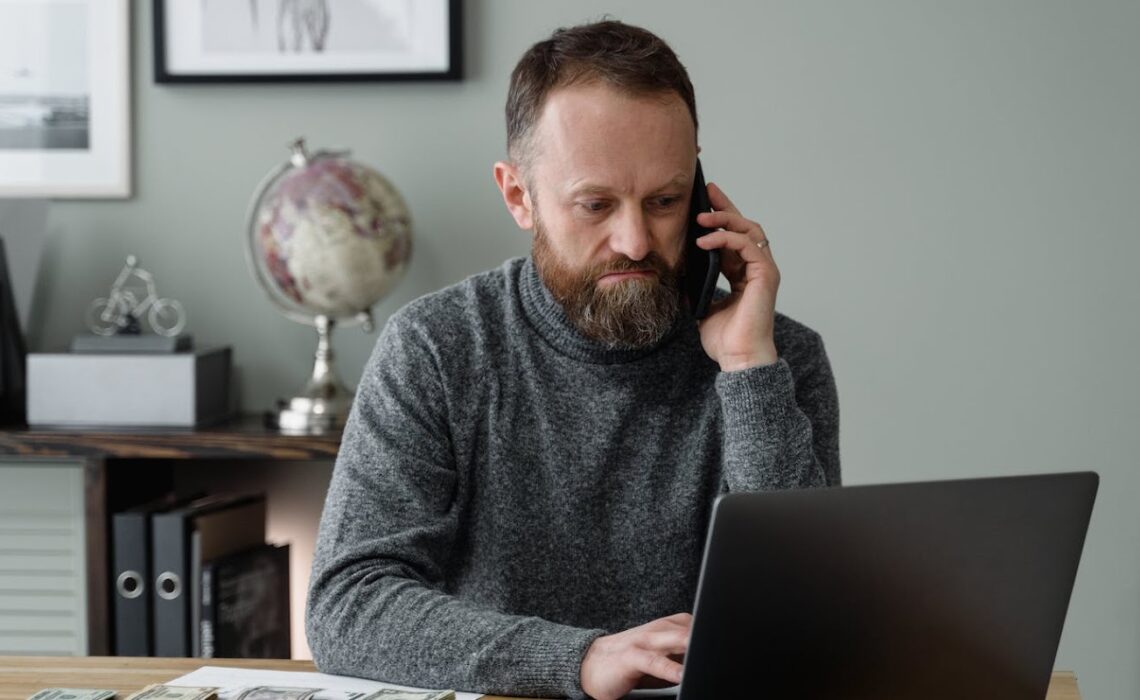
One of the most significant effects of technology’s ever-changing environment has been on social relationships. Computers and digital communication have significantly changed the deaf community by enabling connections and creating a sense of global belonging. Through the creation of lively online communities and improved communication accessibility, technology integration has enabled deaf people to break down barriers and form meaningful relationships like never before.
Enhancing Communication Accessibility
Human interaction is fundamentally based on communication, and for the deaf community, conventional barriers like spoken language can frequently obstruct deep connections. On the other hand, computers have completely changed the way deaf people communicate because they provide a range of platforms and tools that are tailored to their needs.
The creation of video relay services (VRS) and video remote interpreting (VRI), which allow deaf people to easily communicate with hearing people via sign language interpreters, is one of the most important developments.
These services, which are available on computers and mobile devices, have revolutionized the accessibility of communication in both personal and professional contexts.
Furthermore, text-based communication tools like email and instant messaging have become indispensable for the deaf community. These platforms remove the obstacles that spoken language imposes on communication, enabling speedy and effective exchanges. Furthermore, real-time transcriptions made possible by advancements in speech-to-text technology have made it simpler for deaf people to take part in voice-centric conversations.
Creating Vibrant Online Communities
Photo by Andrea Piacquadio
The deaf community has embraced online platforms to create lively and inclusive communities, as the internet has shown to be a powerful tool for fostering connections and community-building. The deaf community’s varied interests and needs are met by social media platforms, online forums, and specialized websites, which offer areas for communication, assistance, and resource sharing.
People who are Deaf and live anywhere in the world can now interact with others who have similar challenges, interests, and experiences. Through information sharing, advice seeking, and support giving among themselves, online communities help deaf people feel less alone and more a part of the community.
In addition, the growth of deaf-identifying social media influencers and content producers has expanded the global reach of the deaf community’s voices and experiences. Deaf creators challenge stereotypes and societal perceptions by sharing their stories, experiences, and insights on platforms like YouTube, TikTok, and Instagram. By doing so, they empower and educate both deaf and hearing audiences.
Empowering Advocacy and Activism
In advocacy and activism efforts, technology has also been instrumental in amplifying the voices of the deaf community. Digital outreach programs, online petitions, and social media campaigns have given deaf people effective means of bringing attention to systemic barriers, deaf rights, and accessibility problems.
Deaf activists and advocacy groups can mobilize supporters, reach a wider audience, and bring about significant change by using online platforms. Conversations about deaf representation in media, access to jobs and education, and the value of inclusive design in public spaces and technology have been spurred by hashtags and viral campaigns.
Online platforms have also made it easier for deaf people from various places and backgrounds to collaborate and exchange cultures, lending a united voice to their advocacy for shared objectives. The internet’s global connectivity has made deaf advocacy a movement that transcends national boundaries and increases the combined influence of deaf people all over the world.
Challenges and Opportunities
Undoubtedly, the incorporation of technology has improved the quality of life and social connections for individuals who are deaf, but it also brings with it certain challenges and considerations. The lack of proper support for deaf users on many digital platforms and services means that accessibility is still a major problem. Continuous efforts are needed to enhance user interface design, captioning, and sign language interpretation to guarantee equitable access to information and communication technologies.
Furthermore, the digital divide creates an obstacle to access for the deaf living in underprivileged areas or places with inadequate internet access and technology infrastructure. Targeted interventions, funding for community centers, digital literacy initiatives, and accessible technology made specifically with deaf people’s needs in mind are necessary to close this gap.
Notwithstanding these obstacles, technology has enormous potential to empower the deaf community and promote international connections. Deaf people can continue to create inclusive communities, fight for their rights, and create a more accessible and equitable world for the coming generations by utilizing the power of digital communication and online platforms.
Conclusion
In summary, computers have had a significant impact on deaf social connections, opening the door for the development of a vibrant and connected global deaf community. Technology has revolutionized the ways in which deaf people connect, communicate, and work together. It has done this by improving communication accessibility, fostering online communities, and supporting advocacy efforts.
Prioritizing accessibility and inclusivity is crucial as we embrace new technological developments and innovations to make sure that everyone in the deaf community can take full advantage of the digital revolution and participate fully. We can harness the transformative potential of technology to create a more inclusive and connected world for deaf people everywhere by cooperating to address issues and seize opportunities.
For those who are looking for additional support, Unspoken Language Services offers interpreting services to help bridge the communication gap between the deaf and hearing communities.
Photo Credit to: Photo by Tima Miroshnichenko

